Rome occupies a special place among European capitals. It is a city-symbol, a city-primary source, where the Western civilization originated. The mighty Roman Empire, which subjugated the entire Mediterranean, began right here - on the banks of the Tiber River. The historical and cultural heritage of Rome is priceless; architectural and cultural masterpieces await tourists at every step.
Rome is the legendary Colosseum and the treasures of the Vatican Museums, the historic ruins of the Capitol and the magnificent facades of baroque villas. The whole city can be viewed as an open-air museum, its streets and squares are home to the history of three thousand years of civilization, thought, art and culture.
What to see and where to go in Rome?
The most interesting and beautiful places for walking. Photos and a short description.
- Coliseum
- Pantheon
- Vatican
- Cathedral and St. Peter's Square
- Vatican Museums
- Vittoriano
- Trastevere
- Piazza Navona
- Piazza del Popolo
- Castel Sant'Angelo
- Roman forum
- Forum of Trajan
- Baths of Caracalla
- Arch of Constantine
- Basilica of San Giovanni in Laterano
- San Paolo Fuori le Mura
- Santa Maria Maggiore
- Church of Il Gesu
- Basilica of Saint Clement
- San Pietro in Vincoli
- Church of Sant'Ignazio
- Santa Maria in Trastevere
- Capitoline Museum
- National Museum of Rome
- Doria Pamphili Gallery
- Rome Opera House
- Museum and Crypt of the Capuchins
- Catacombs of Rome
- Pyramid of Cestius
- Big circus
- Appian way
- Villa Borghese
- Villa Medici
- Spanish stairs
- Trevi Fountain
Coliseum
The main arena of Ancient Rome, a theater for gladiator fights, persecution of captives by wild animals and other no less bloody performances of the annual Games of the capital of the Empire. In honor of the opening of the Colosseum in 80 AD. the Great Games were arranged, which lasted more than 3 months. The ancient stones of the Arena still remember the gladiators killed for the amusement of the public and the slaves from the occupied provinces torn to pieces for pleasure.
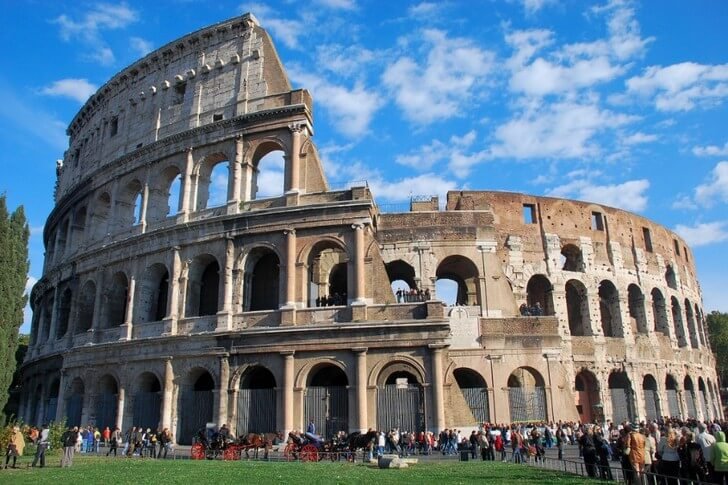
Address: Piazza del Colosseo, 1, 00184 Rome, Italy
Phone: +39 06 3996 7700
Opening hours: Mon-Sun 08:30-19:00
Pantheon
Construction of the II century BC, "temple of all gods" in Greek. The Pantheon was created during the period of the highest flowering of ancient Roman architecture. For many centuries, pagan gods were worshiped under the dome of the building, until at the beginning of the 7th century the Pantheon was turned into a Christian temple. The building has survived to this day in good condition thanks to numerous restorations that began before the advent of our era.
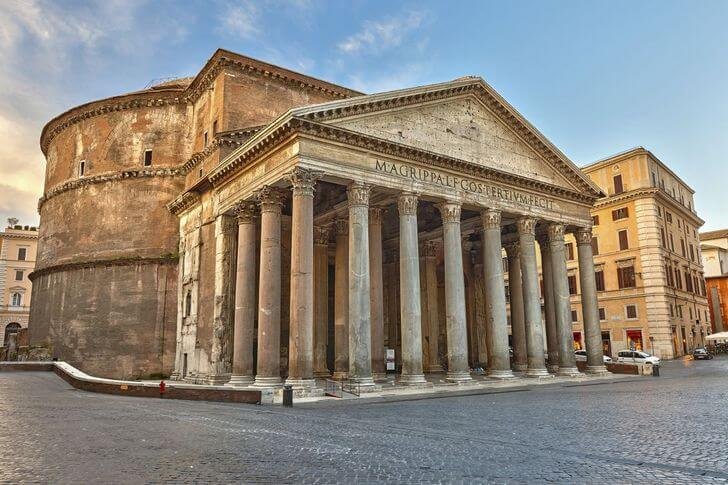
Address: Piazza della Rotonda, 00186 Rome, Italy
Phone: +39 06 6998 1800
Opening hours: Mon-Sat 09:00-19:00, Sun 09:00-18:00
Vatican
City-state, stronghold and main bastion of the Catholic Church, the residence of the Pope. In total, about 800 people are citizens of the Vatican, mostly priests and church employees. The Vatican is famous for its museums, which contain outstanding collections of paintings, sculptures and applied arts. This is a real treasure trove of mankind. Also, tourists are attracted by the main Catholic church - St. Peter's Cathedral.
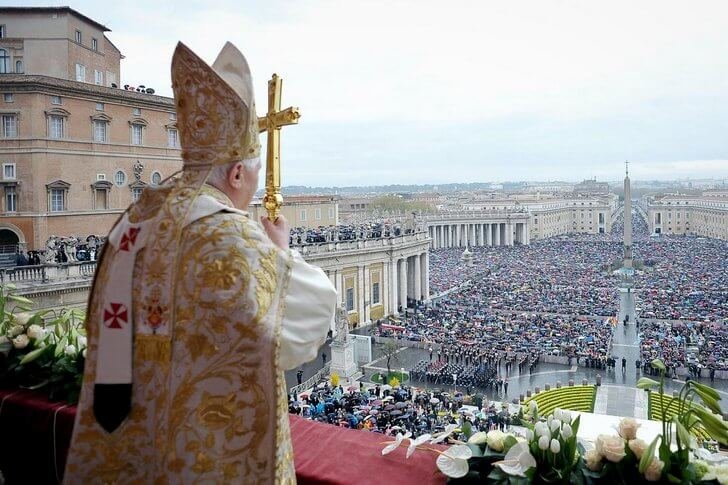
Address: St. Peter's Square, 00120 Vatican City
Phone: +39 06 6988 3333
Opening hours: Mon-Sat 08:30-18:30, Sun 08:30-13:00
Cathedral and St. Peter's Square
St. Peter's Cathedral is the spiritual center of the Catholic branch of Christianity. Here the Pope himself conducts festive masses. The temple arose on the site of the former circus of Nero in the 4th century. At first it was a small basilica where the relics of the Apostle Peter were kept. In the 15th century it was rebuilt into a grandiose building. Raphael, Michelangelo, Peruzzi, Maderno and others worked on St. Peter's Cathedral. In front of the temple is a wide square with a colonnade of 284 Doric columns.
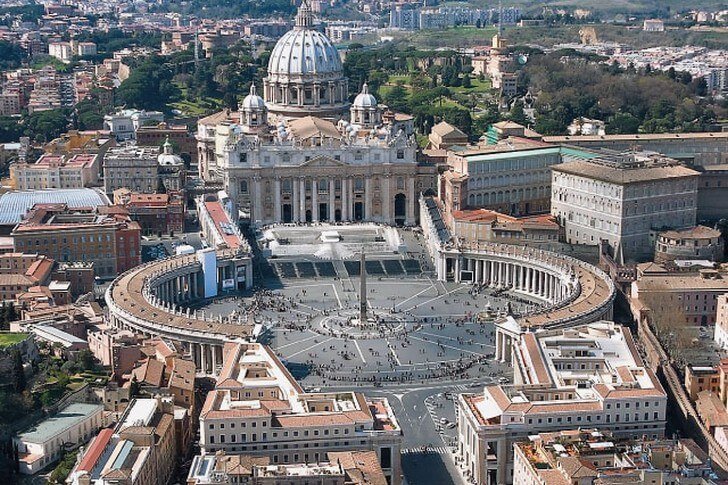
Address: Piazza San Pietro, 00120 Vatican City
Phone: +39 06 6988 3333
Opening hours: Mon-Sat 08:30-18:30, Sun 08:30-13:00
Vatican Museums
Museum collections were collected at different times by the popes. They were founded in the 16th century by Pope Julius II. An extensive exposition of paintings of the 11th-19th centuries is collected in the Pinacoteca of the Vatican. You can get acquainted with tapestries and frescoes by the great masters by visiting the Sistine Chapel and Raphael's Stanzas. Antique statues, sarcophagi from ancient Rome are presented in the museums of Chiaramonti and Pio Cristiano. The history of religions around the world is described by the exhibits of the Ethnological Missionary Museum. The history of the Vatican is presented in the Historical Museum. The Vatican Library has over one and a half million books. The visit is open daily, except Sundays and Catholic holidays.
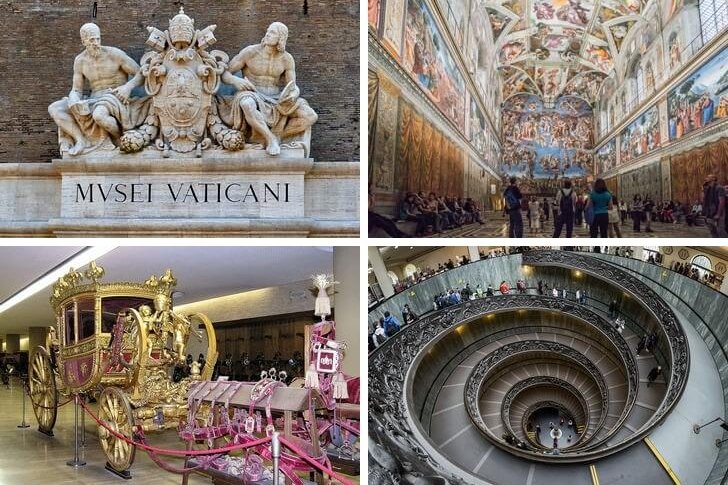
Address: Viale Vaticano, 00120 Vatican City
Phone: +39 06 6988 3333
Opening hours: Mon-Sat 09:00-18:00, Sun Закрыто
Vittoriano
Memorial architectural complex of the XVIII-XIX centuries. in honor of King Victor Emmanuel, the first ruler of a united Italy. On the site in front of the monumental palace, the Eternal Flame burns and a guard of honor is on duty. The inhabitants of Rome are not too fond of this bulk of white marble, as they believe that it does not fit into the architecture of the city. Some Romans call Vittoriano the ridiculous "wedding cake".

Address: Piazza del Vittoriano, 00186 Rome, Italy
Phone: +39 06 678 0660
Opening hours: Mon-Sun 09:00-19:00
Trastevere
Bright and colorful Roman quarter across the Tiber River. Here in the XVIII century BC. the Etruscan tribe settled, from which the history of the Eternal City began. In the era of the Empire, luxurious patrician villas stood here. In the area, many buildings and residential buildings are many hundreds of years old, so they look very authentic and attractive to tourists. People continue to live in dilapidated houses.
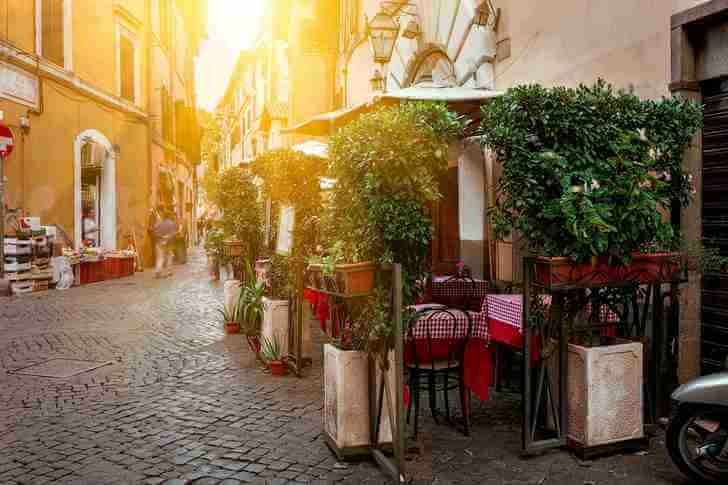
Address: Trastevere, 00153 Rome, Italy
Opening hours: 09:00 - 01:00
Piazza Navona
Oval square in the central part of Rome, located on the site of the former circus of Domitian. Since the 16th century, ambassadors, cardinals, bankers and other wealthy representatives of society began to settle in this area. From the 15th century until the middle of the 19th century, there was a market here. In the middle of the square is the Fountain of the Four Rivers - a sculptural group with a deep symbolic meaning. In the middle of the composition rises an obelisk, symbolizing the power of the Pope. Around the obelisk are sculptures representing the rivers of four continents.
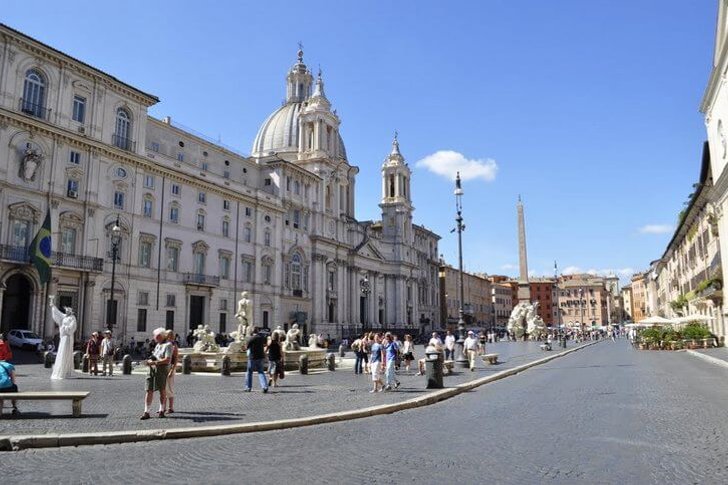
Address: Piazza Navona, 00186 Rome, Italy
Opening hours: 09:00 - 24:00
Piazza del Popolo
In a free translation into Italian, the name of this place sounds like "People's Square". Piazza del Popolo played an important role in the life of Rome, as the road to the northern provinces began from here. The square is decorated with the Church of Santa Maria del Popolo and the Egyptian obelisk of Ramses II. The piazza received its modern look at the beginning of the 19th century, the architect D. Valadier worked on it.
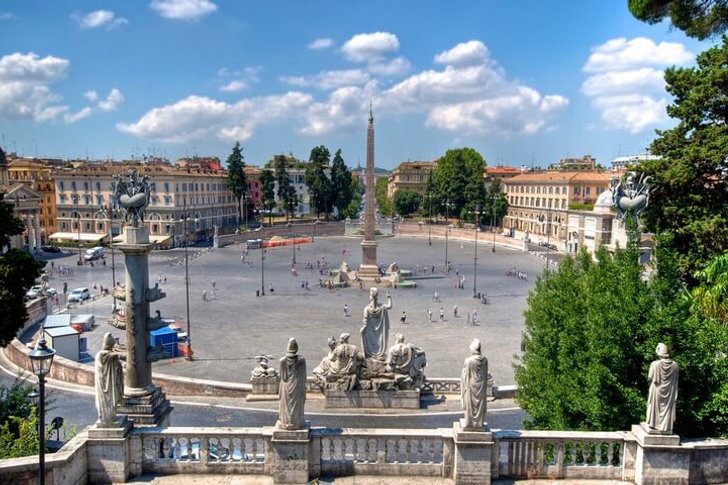
Address: Piazza del Popolo, 00187 Rome, Italy
Opening hours: 09:00 - 24:00
Castel Sant'Angelo
The construction began to be built in the era of the Roman Empire in the 2nd century AD. During its existence, it served as a papal dwelling, prison, warehouse and even a tomb. Today, the fortress houses the Military History Museum. The castle got its name in the 6th century AD. after the image of the Archangel Michael appeared to Pope Gregory. Directly from the castle, a picturesque bridge is thrown across the Tiber River, which was built under the emperor Hadrian. On the bridge it was possible to get to the Champ de Mars by the shortest route.

Address: Lungotevere Castello, 00186 Rome, Italy
Phone: +39 06 681 9111
Opening hours: Mon-Sun 09:00-19:30
Roman forum
The very heart of Ancient Rome, where important state and social events took place - the fate of laws was decided, consuls were elected, the triumphs of emperors took place after victorious wars. After the fall of the Empire, the forum was destroyed and devastated, and time did its work, so only fragments have survived to this day. The remains of the forum are part of a protected archaeological area, where an open-air museum operates.
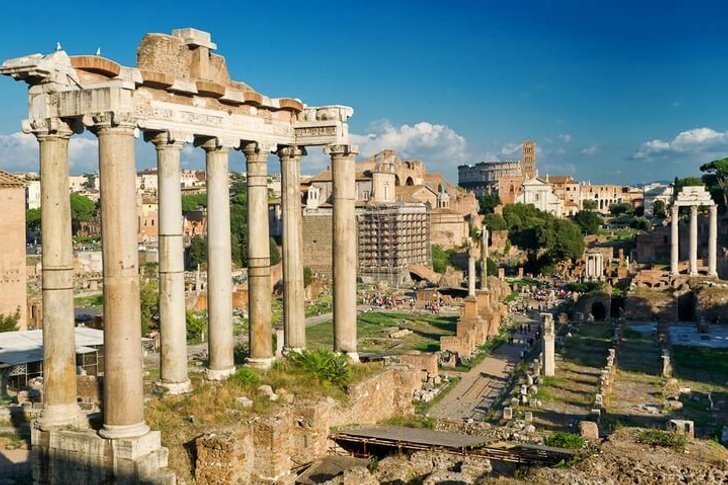
Address: Piazza San Lorenzo in Lucina, 00186 Rome, Italy
Phone: +39 06 699 8711
Opening hours: Mon-Sat 08:30-17:00, Sun 08:30-13:00
Forum of Trajan
The forum appeared at the turn of II-I centuries. BC. In those days, it was a large square surrounded by a market, the temple of Emperor Trajan, Greek and Latin libraries. The 38-meter column of Trajan made of Carrara marble has survived to our time. Inside the column is the tomb of the emperor himself and his wife. Trajan's Forum is the last building of its type built in Rome.

Address: Piazza Foro Traiano, 00187 Rome, Italy
Phone: +39 06 699 8711
Opening hours: Mon-Sat 08:30-17:00, Sun 08:30-13:00
Baths of Caracalla
Remains of ancient Roman baths along the Appian Way. The culture of visiting the term was well developed in the Roman Empire. People came here to talk, learn the latest news or hold business negotiations. The Baths of Caracalla were built in the 3rd century AD. under the emperor Septimius Bassian Caracalla. Already in the 5th century AD. this architectural complex began to be considered a real wonder of the world. In addition to baths and pools, there was a library here.
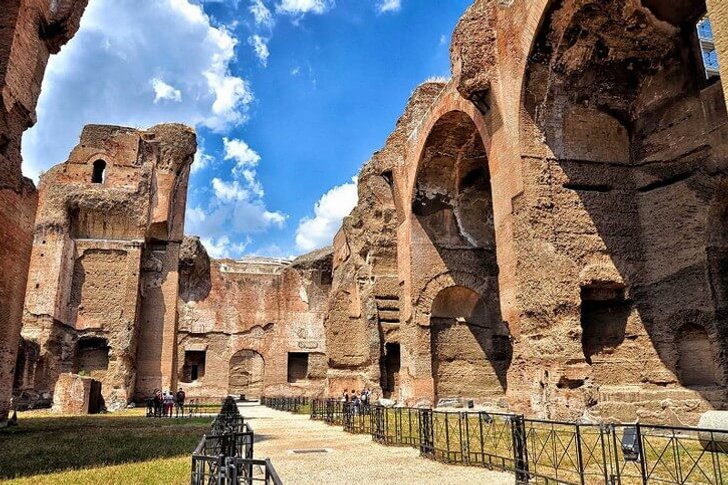
Address: Via delle Terme di Caracalla, 00153 Rome, Italy
Phone: +39 06 3996 7700
Opening hours: Mon-Sun 09:00-19:00
Arch of Constantine
The triumphal arch erected by Emperor Constantine in honor of the victory in the civil war over the troops of his rival Marcus Aurelius Valerius Maxentius. It was under Constantine that Christianity became the official religion (the ruler believed that God himself helped him come to power), the capital of the Empire was transferred to Constantinople, and Rome gradually began to lose its former power and decline.
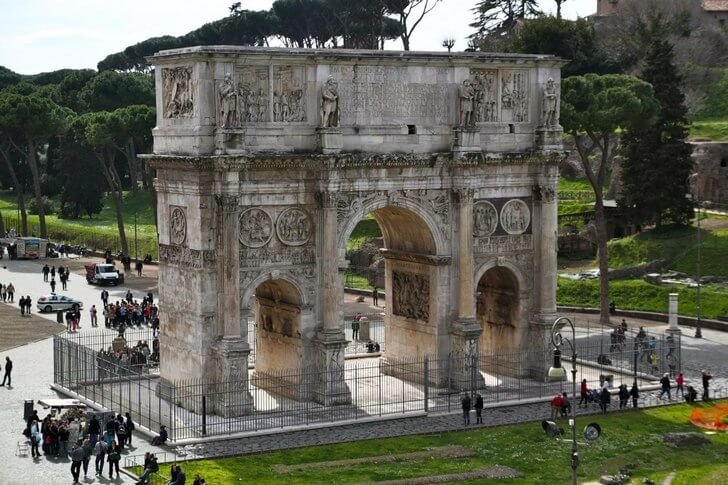
Address: Piazza del Colosseo, 00184 Rome, Italy
Phone: +39 06 3996 7700
Opening hours: Mon-Sun 08:30-19:00
Basilica of San Giovanni in Laterano
One of the most ancient Christian churches, the first temple of Rome. In the church hierarchy, it is above all others, even above St. Peter's. The Catholic hierarchs awarded her the title of "basilica major", that is, "senior". She is recognized as "the head and mother of all churches." The temple appeared during the reign of Constantine under Pope Sylvester I in the 4th century AD. Six popes are buried in the basilica and the relics of the apostles St. Paul and St. Peter are kept.
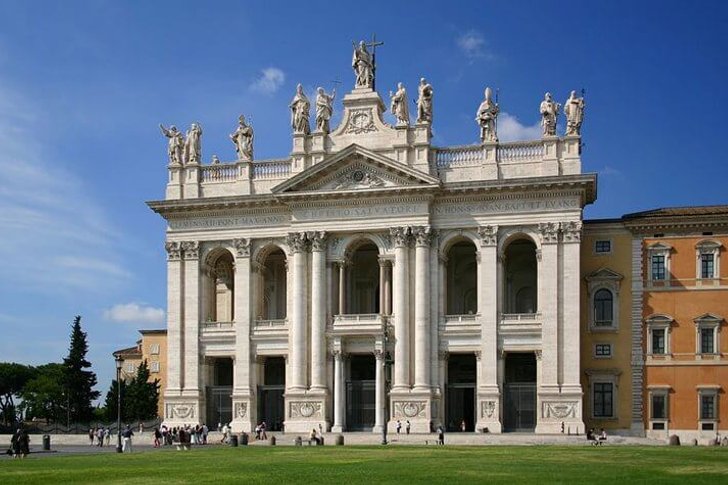
Address: Piazza di San Giovanni in Laterano, 4, 00184 Rome, Italy
Phone: +39 06 6988 2221
Opening hours: Mon-Sat 07:00-19:00, Sun 07:00-18:00
San Paolo Fuori le Mura
Temple of the 4th century AD, erected on the burial site of the Apostle St. Peter, who was executed at the behest of Emperor Nero in the 1st century AD. The building was rebuilt several times under the emperors Theodosius I and Valentinian II. Almost every Catholic Pope tried to bring something of his own into the temple complex, so over time, San Paolo Fuori le Mura expanded in size and grew with new additions.
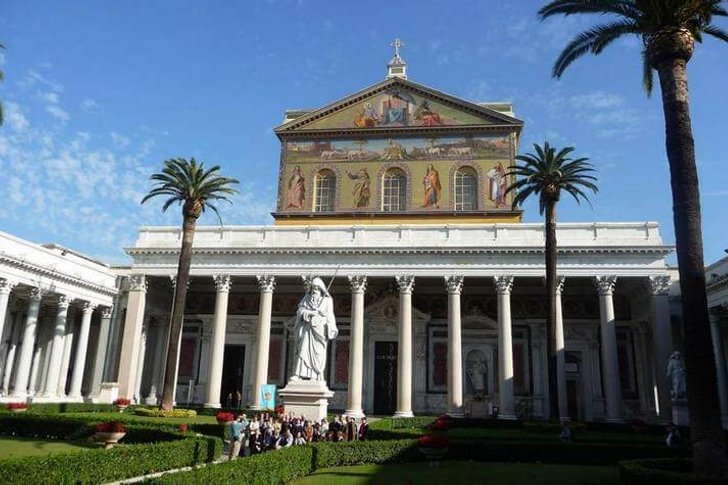
Address: Piazza San Paolo, 00146 Rome, Italy
Phone: +39 06 5422 8738
Opening hours: Mon-Sat 07:00-12:00, 16:00-19:00, Sun 07:00-12:00
Santa Maria Maggiore
One of the four main Catholic churches in Rome. It has a very high status in the ecclesiastical rank of cathedrals (the highest status is assigned to the Basilica of San Giovanni in Laterano). The foundation stone of Santa Maria Maggiore was laid in the middle of the 4th century. In the XIV century, a 75-meter bell tower appeared near the church. The facade, which has survived to this day, is a mixture of Romanesque and Baroque styles.
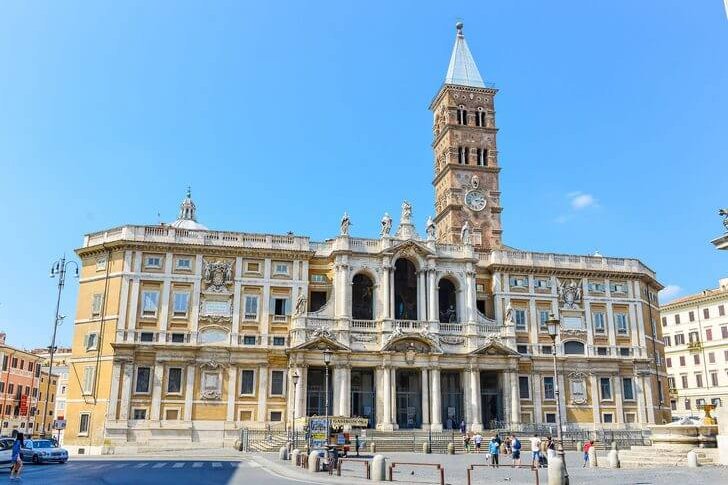
Address: Piazza di Santa Maria Maggiore, 00185 Rome, Italy
Phone: +39 06 488 5865
Opening hours: Mon-Sat 07:00-19:00, Sun 07:00-18:00
Church of Il Gesu
The main Jesuit temple in Rome, where the Grand Master Ignatius of Loyola is buried. The first project of the temple was developed by Michelangelo, but the head of the order did not like it. In 1561, another architect, Giacomo Barozzi, began construction according to his own plan. Until the abolition of the Jesuit Order at the end of the 18th century, considerable wealth was stored in the church of Il Gesu. The church building itself was taken away from the organization. Only after 1814 it was returned back.
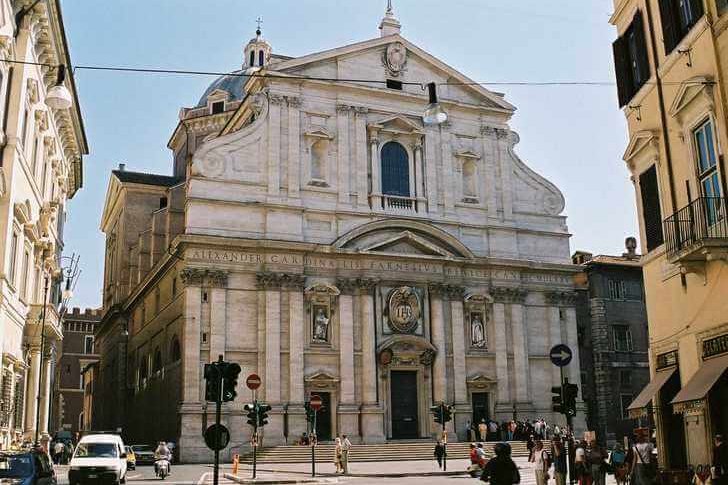
Address: Piazza della Pigna, 00186 Rome, Italy
Phone: +39 06 686 1416
Opening hours: Mon-Sat 07:00-19:00, Sun 07:00-13:00
Basilica of Saint Clement
Unique archaeological site. The church consists of three levels. The lowest one was discovered in the 19th century and represents buildings from the 1st century AD. Frescoes and remains of decor have been preserved here. The second level is an early Christian church from the 4th century. The upper level is a 12th-century basilica, with a baroque façade, an atrium and a fountain inside. The interior decoration is rich, the walls are painted with frescoes of the 18th century.

Address: Piazza San Clemente, 00184 Rome, Italy
Phone: +39 06 7004 2654
Opening hours: Mon-Sat 09:00-12:30, 15:00-18:00, Sun 09:00-13:00
San Pietro in Vincoli
The name of the church is translated as "Saint Peter in chains". It is located on the square of the same name and was founded in the 5th century as a place for storing chains with which the holy apostle was bound. Here is the tomb of Pope Julius II, designed by Michelangelo. One of the main decorations of the tomb is rightfully considered the famous sculpture "Moses". The artist Antonio Polayolo is also buried in the church.
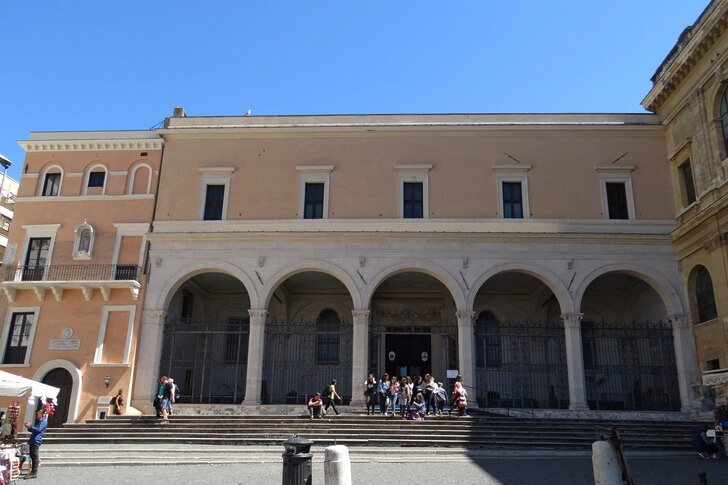
Address: Piazza di San Pietro in Vincoli, 4, 00184 Rome, Italy
Phone: +39 06 488 2860
Opening hours: Mon-Sat 08:00-12:00, 15:00-19:00, Sun 08:00-12:00
Church of Sant'Ignazio
The cult building of the Jesuit order in the Baroque style was built in 1626. It is located on Ignatius Layola Square and is dedicated to this saint who founded the order (he served as a prototype for Don Quixote). The church consists of many chapels, decorated with columns, arches and voluminous stucco. Numerous frescoes tell about the life of Saint Ignatius. The flat ceiling is frescoed in such a way that the illusion of its domed structure is created.

Address: Piazza dell'Ignazio, 00186 Rome, Italy
Phone: +39 06 6880 5721
Opening hours: Mon-Sat 07:00-19:00, Sun 07:00-13:00
Santa Maria in Trastevere
According to presumed data, this church was the first Christian church in Rome. Its foundation dates back to the 3rd century AD. It is located on the square of the same name in the Trastevere district. The building is rightfully considered a pearl of medieval architecture: the facade with arches and columns is decorated with colorful mosaics of the 12th century. Inside the church is arranged according to the principle of a classical basilica. In addition to Catholic icons, Christian icons are also kept here.
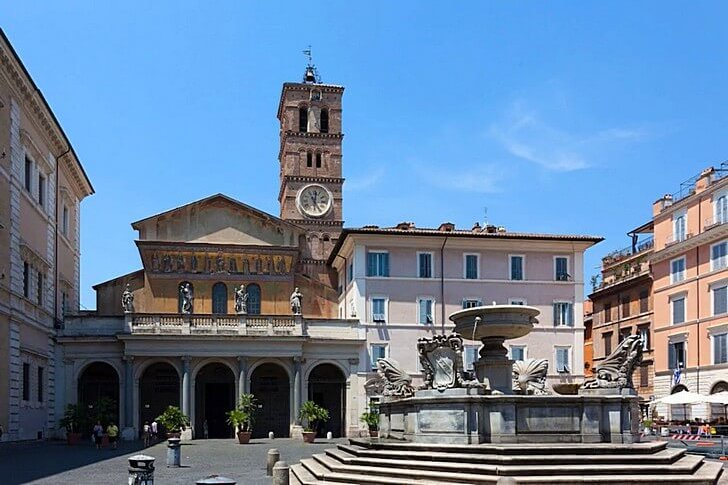
Address: Piazza Santa Maria in Trastevere, 00153 Rome, Italy
Phone: +39 06 581 2275
Opening hours: Mon-Sat 07:00-19:00, Sun 07:00-13:00
Capitoline Museum
The world's first museum was born in 1471, when Pope Sixtus IV donated a collection of antique bronzes to the inhabitants of Rome. It is located on the Capitoline Square, designed by Michelangelo, in three palaces. The New Palace presents an exposition of classical sculpture. In the Palace of the Conservatives there are world-famous ancient statues, a collection of paintings from the Renaissance, a collection of coins. The main part of the Palace of the Senators is occupied by the City Hall of Rome, the first floor is reserved for the museum.

Address: Piazza del Campidoglio, 00186 Rome, Italy
Phone: +39 06 678 0424
Opening hours: Mon-Sat 09:00-20:00, Sun 09:00-14:00
National Museum of Rome
It is a museum complex located in four buildings. Palazzo Massimo houses exhibitions of ancient Roman jewelry, coins, as well as sarcophagi, frescoes and mosaics. Palazzo Altemps bears the name of its first owner, Cardinal Altemps. His personal collection of works of art is exhibited here, as well as a collection of ancient sculptures and an Egyptian exposition. The crypt of Balbi houses ancient Roman artifacts found during excavations. The building of Thermae Deoklitsiana itself is already a unique architectural monument. Various exhibitions are held here, there is also a permanent exhibition of ancient sculptures, manuscripts and archeological finds.
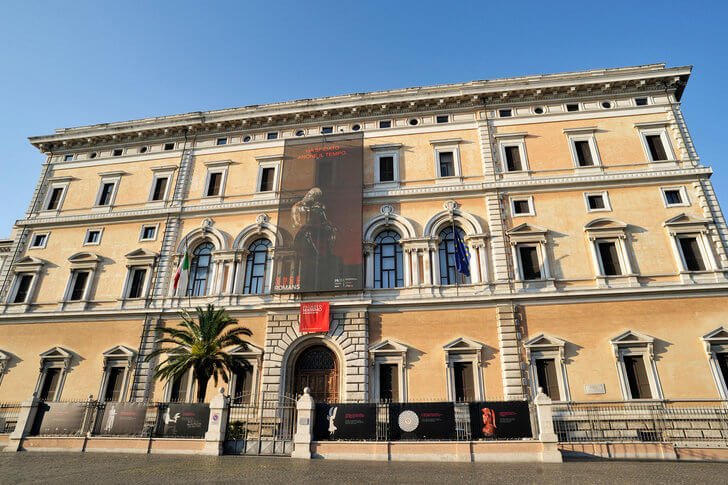
Address: Via di Cavour, 00184 Rome, Italy
Phone: +39 06 3996 7700
Opening hours: Mon-Sat 09:00-19:45, Sun 09:00-14:00
Doria Pamphili Gallery
The private collection is on display at Palazzo Doria Pamphilj, one of the main streets of old Rome. It began to be collected in 1651. The palace is the largest private palace in the city. The paintings of the Italian painters of the 17th century are most widely represented. An interesting gallery of sculptures, a rich collection of antique furniture and fabrics. In total, more than 500 copies are presented here, in six main halls.
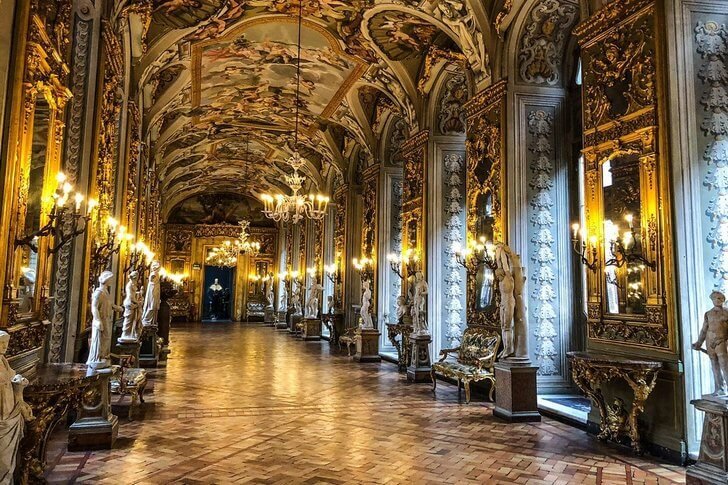
Address: Via Doria Pamphili, 00187 Rome, Italy
Phone: +39 06 4208 3446
Opening hours: Mon-Sat 09:00-19:00, Sun 09:00-13:00
Rome Opera House
The first name is the Constanti Theater, after the name of its founder. The opening of the theater took place in 1880; in the 20th century, the building was acquired by the city authorities, and was partially rebuilt twice. World premieres of great composers took place on this stage, the best voices of the world performed. Currently, both opera and ballet performances and concerts are held here. The theater has a ballet school.
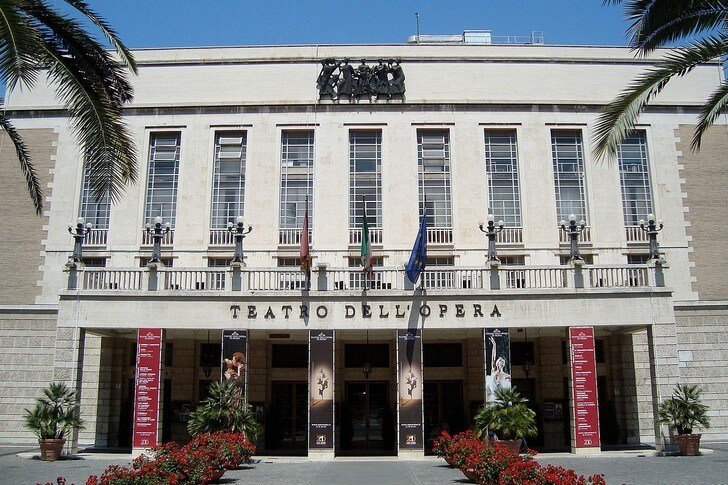
Address: Piazza Babuino, 00187 Rome, Italy
Phone: +39 06 481 6001
Opening hours: Mon-Sat 09:00-13:00, 17:00-20:00
Museum and Crypt of the Capuchins
Santa Maria della Cancezione is a small Roman church with a modest façade. However, the place is attractive for tourists. The Roman cardinal Antonio Barberini, a member of the Capuchin order, is buried here. Under the church there is a burial of monks, the walls of the crypt are decorated with bones and skulls of more than 4,000 thousand dead from 1528 to 1780. Since 2012, the Capuchin Museum has been organized here: the exhibits tell about the history, traditions and secrets of the ancient Order.
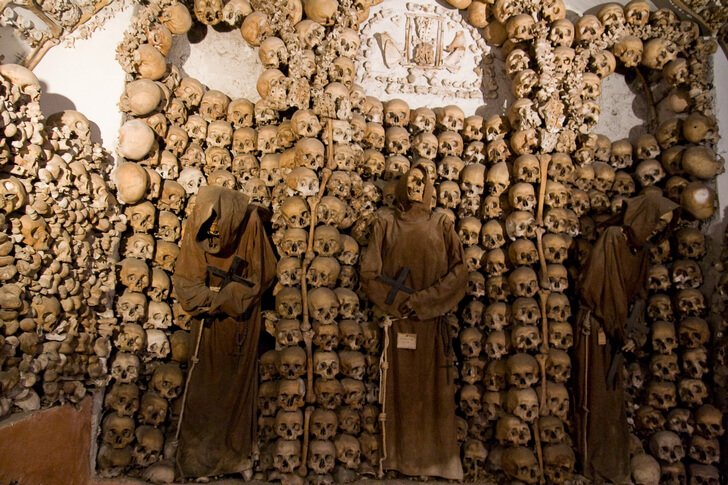
Address: Via Vittorio Veneto, 27, 00187 Rome, Italy
Phone: +39 06 482 4090
Opening hours: Mon-Sat 09:00-19:00, Sun 09:00-13:00
Catacombs of Rome
Numerous underground galleries and labyrinths that are located under the surface of Rome. Many pre-Christian burials have been found here, but the foundations of some of the underground passages were created in the era of early Christianity. The first associates of Jesus hid in these dungeons. Here they held religious rites, meetings, prayers without the danger of being discovered and caught.
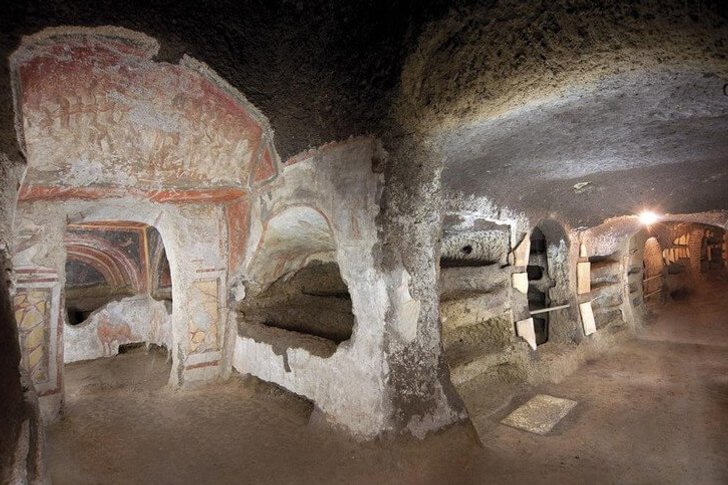
Address: Via Cavour, 00184 Rome, Italy
Phone: +39 06 7004 2654
Opening hours: Mon-Sun 09:00-17:00
Pyramid of Cestius
It is believed that the building was erected in the 1st century BC. It served for burial purposes - here is the tomb of Praetor Gaius Cestius Epulus. The construction took place during the period of the conquest of Egypt, when the fashion for the "Egyptian style" appeared in Ancient Rome. At that time, obelisks, sculptures and other monuments were taken out of the Nile Valley. The Pyramid of Cestius reaches a height of 37 meters and a width of almost 30 meters.

Address: Via della Piramide Cestia, 00153 Rome, Italy
Phone: +39 06 574 6810
Opening hours: 09:00 - 19:00
big circus
Ancient hippodrome between the Palatine and Aventine hills. In the era of the Roman Empire, chariot races were held here. Under the emperor Gaius Julius Caesar, the circus was rebuilt and grew to a fairly large size. More than 250 thousand people could watch the spectacle at the same time. In the spectator sector, lodges for patricians and standing places for plebeians were equipped.
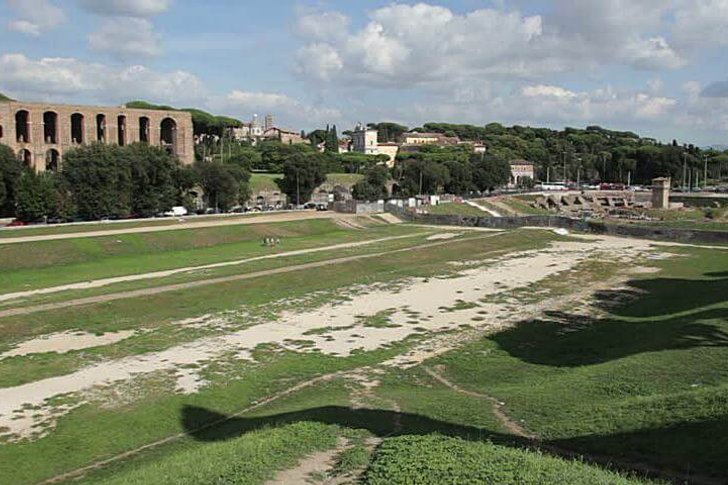
Address: Via dei Servi, 00184 Rome, Italy
Opening hours: 09:00 - 22:00
appian way
One of the most important roads of the Roman Empire, which led from the Eternal City to the south of the Apennine Peninsula. The total length of the route is more than 500 km. The road began to be built in the 4th century. Due to the excellent quality of the pavement masonry, the Appian Way made it possible to quickly reach places remote from the capital or to transfer troops in a fairly short time. The roadbed has survived to this day in very good condition.
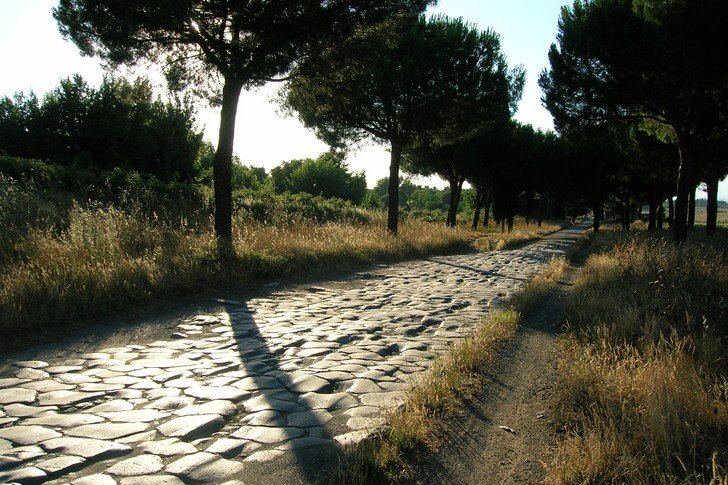
Address: Via Appia Antica, 00178 Rome, Italy
Opening hours: Open 24 hours.
Villa Borghese
Palace of the XVI century, built for Cardinal Scipione Borghese on the site of former vineyards. The building is surrounded by a huge English-style park with numerous antique statues. On the territory there is a hippodrome, a zoo, a theater and several museums. Until the beginning of the 20th century, the mansion with the park belonged to the Borghese family, then all the property went to the state.
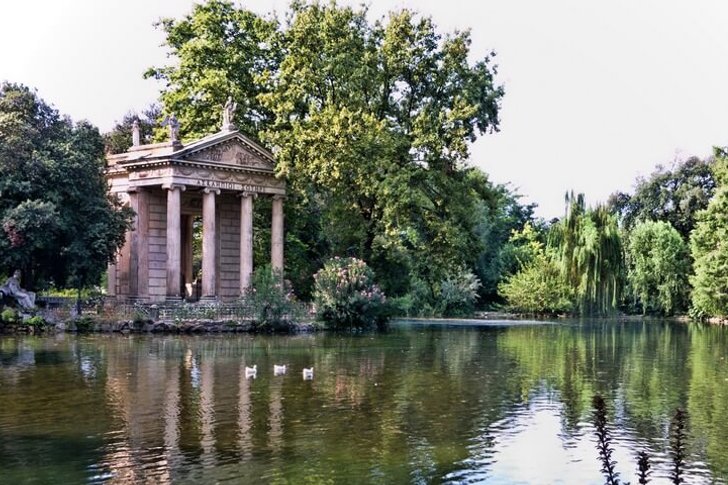
Address: Piazzale Napoleone I, 00197 Rome, Italy
Phone: +39 06 32810
Opening hours: Mon-Sun 09:00-19:00
Villa Medici
It is located on the hillside of Pincho on the site of the former gardens of Lucullus. In the middle of the 16th century, the territory near the hill became the possession of the Medici Cardinal, who built a villa-residence here for his family. After the extinction of the Medici dynasty, the house and surrounding lands were transferred to the Lorraine family. The Medici Cardinal acquired many works of ancient art to decorate the villa. Some examples can be admired in the Uffizi Gallery.
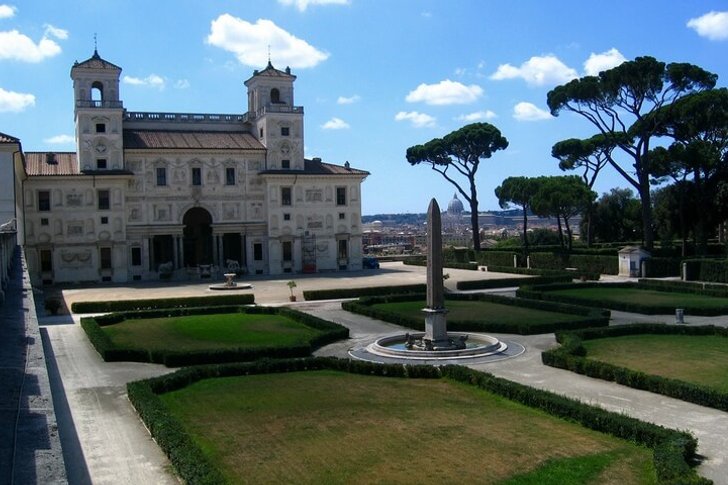
Address: Viale dei Medici, 1, 00197 Rome, Italy
Phone: +39 06 6761 645
Opening hours: Mon-Fri 09:00-19:00, Сб-Sun Закрыто
spanish stairs
Italian baroque staircase in the center of Rome. It is recognized as one of the most picturesque in Europe. The stairs start at the Plaza de España and lead to Pincho Hill. The Plaza de España itself is a very expressive place where it is always pleasant to stroll among the flowering flower beds. In the 17th century, the Spanish embassy was located here. As a sign of good relations between the two countries, the piazza was named after Spain.
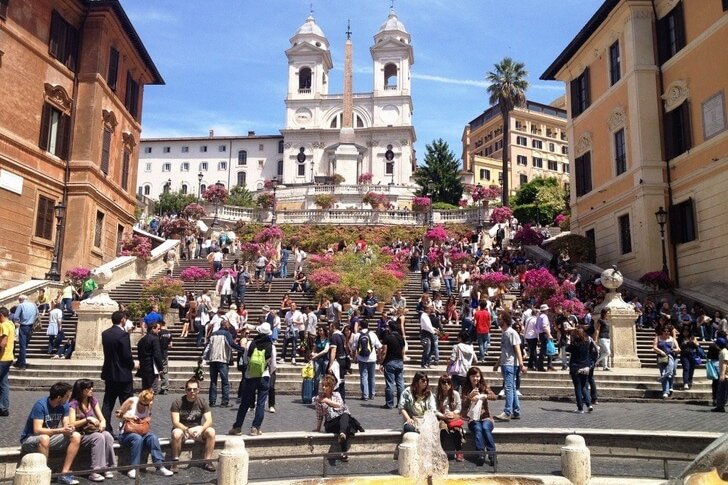
Address: Piazza di Spagna, 00187 Rome, Italy
Opening hours: Open 24 hours.
Trevi Fountain
The most famous Roman fountain of the 18th century, where every guest of the city is simply obliged to throw a coin for good luck. In a week, coins are thrown in the amount of several thousand euros. All money goes to a charitable foundation. The sculptural composition of the fountain consists of the figure of the sea god Neptune on a chariot and his companions. 16 architects fought for the right to work on the construction of the fountain.
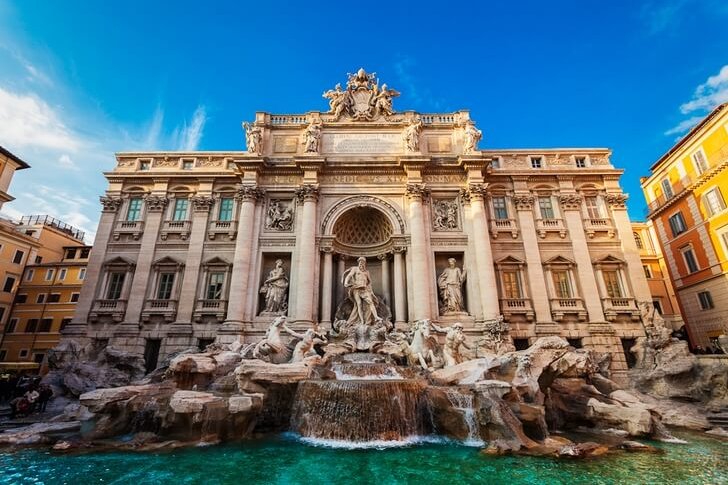
Address: Piazza di Trevi, 00187 Rome, Italy
Phone: +39 06 0608
Opening hours: Open 24 hours.